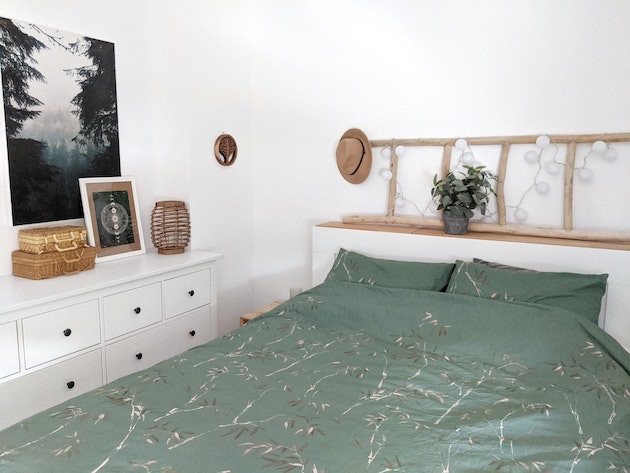Our Blog
10 tips to optimise a small bedroom
Choosing furniture for small bedrooms is a big challenge. A piece of furniture with centimetres more than the ideal can already create the feeling of lack of space in the environment and unbalance the organisation and fluidity. Therefore, I prepared 10 tips to help you organize and arrange the furniture in the best.
1. Define the essential furniture
The bed is the main piece of furniture in the bedroom. After it, it is worth evaluating the possibility of including a bedside table and a wardrobe. The tip to optimize space with these choices is to create the table and cabinetry as an extension of the wardrobe or the headboard itself, rather than as a stand-alone item.
Office table as an extension of the extension of the wardrobe. Photo by sheela sahani on Unsplash
2. Let the room have fewer functions and uses
The study corner, reading corner and, in cases where only the bedroom is small, even the clothes storage can be in another room. Optimize the room only for sleeping, always prioritising the bed.
3. Get rid of furniture and objects
A great tip to avoid accumulating decoration items, clothes and furniture is always to practice the practice of detachment. Donate items that are not used and try to leave in the room only the essentials.
4. Bet on minimalist decoration
The fewer objects displayed in a small environment, the cleaner and more functional it is, since it will not give the impression of disorder. In case you have a bedside table, invest in drawer.
Minimalist decoration. Photo by SANDRA REI on Unsplash
5. Take advantage of the aerial and vertical space
Use the aerial space to place shelves in the room and organize the resident's items.
Having a bedside table on each side of the bed is important to support books, mobile phones, watches, glasses and, if there are drawers, to store personal belongings. It is also nice to have lamps on both sides of the bed to light separately, giving privacy and autonomy to the residents. If space does not permit, a way out is to install sconces on the wall or pendants on the ceiling.
Shelves on the wall. Photo by Canva
Wall light. Photo by SHOP SLO® on Unsplash
6. Prioritise functional furniture
Functional furniture is a good investment to take advantage of space as storage. Doors, drawers and shelves will help to organize the environment. Sliding doors in the wardrobe are great allies of those who have a small room, after all, with them, it is not necessary to have space for the opening of traditional doors.
Wardrobe with sliding doors. Photo by Nathan Van Egmond on Unsplash
7. Define a good position for the bed
The ideal is to place the bed against the wall to facilitate the circulation on a daily basis. Professionals recommend using a headboard to make it cosier.
Headboard behind the bed. Photo by Kam-Idris sur on Unsplash.
8. Use mirrors to give a feeling of spaciousness
Use mirrors to gain that feeling of spaciousness. They can be designed together with the furniture and cover, for example, the wardrobe doors or a wall.
Big mirror placed in the opposite side of the bed. Photo by SANDRA REI on Unsplash
Mirror placed behind bed. Photo by Canva
9. Measure all the furniture
Never buy a piece of furniture without measuring the free space in the room and the dimensions of the object itself. Optimising the space demands attention and care. I advise you to design the room and the furniture on a reduced scale and then test the furniture in different positions until you find the best furniture arrangement to have an optimised room that allows a good circulation.
10. Sense of spaciousness
When decorating your small bedroom, prefer light tones, as they give a feeling of spaciousness. If you do not give up vibrant colours, they can be in places, such as a wall, bedding, cushions and rugs.
White and beige tones used as color palette. Photo by Canva.
Do you need advice how to optimise your bedroom? We can help you. Contact us!
I hope you enjoyed those tips :-).
Renata Koglin
